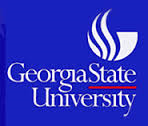ED- Late last year the publisher joined the ranks of the prestigious Virginia Writer’s Club, and was introduced to the many great writers who made up this organization. Since then his publication, The Eerie Digest, has begun to introduce its readers to the many genres that these great authors excel in. Therefore we are very proud to present author Solveig Eggerz to our legions of readers. Solveig you were a native of Iceland and moved to the United States. What were the circumstances that made you choose this country to move to.
SE-My father was in the Icelandic foreign service. We lived in England for five years, then we moved to Washington, DC. I practically grew up here, that is, I lived here from age 7 to 13, so I had deep roots in this country. After that we moved to Germany, and for four years I attended boarding school in Iceland. Later I received a scholarship to attend the University of Kansas. After graduation from KU, I decided to stay in this country.
ED- Tell us about the educational background that you have had, and the degrees that you earned in the fields that you chose.
SE-I graduted from the Secondary School of Reykjavik with a baccalaureate. My bachelor’s degree from KU is in International Relations. I received a master’s degree and a PhD from Catholic University in Comparative Literature with a focus on medieval works.
ED- You also had a background in journalism. Can you tell us about this aspect of your life?
SE- I was a reporter for Roll Call for one year. After that I submitted regularly to the late Washington Daily News. Then we moved to Alexandria, VA, where my three children were born. During the years they were growing up, I wrote for the Alexandria Port-Packet (now Alexandria Gazette-Packet), first as a reporter and later as a columnist. All my life I have contributed articles to newspapers and journals.
ED- You also have a family history of writers that have influenced you. Please tell us all about them.
SE- Sorting through my grandparents’ estate, I discovered that my grandfather, Sigurður Eggerz, who was a government official in several capacities all his life, including prime minister, had another side to him. He wrote and published many plays that depicted his political views, that is, how government should serve the people. He published a book of essays, reflecting his many experiences. But poetry was his true love, and his “God Almighty Rules” was put to music and is played as a consolation to all those who have lost loved ones in the sea on the annual Day of the Sailor in Iceland. His grandfather, Friðrik Eggerz, a minister and a farmer, wrote a 2 volume autobiography when he was in his 80s. These books describe the history and sociology of the region where he lived and are still read today as a source of information on how people lived in the 18th century. But my father was the greatest influence on me. I watched him struggle with his writing during all his years in the foreign service. In the evening after work, he wrote short stories, novels, and non-fiction. But it wasn’t until he retired as ambassador to Bonn, Germany, at age 70, that he began to publish his material. All his books were best sellers. As he lay dying, I spent many hours at his bedside in Iceland. We talked about his two unfinished manuscripts. I was concerned about how to edit them and render them into publishable form. “I’ll edit them,” he said. “Write your own book.” I promised I would. That conversation took place in 1994. It wasn’t until 2001 that I drafted Seal Woman. By 2003, it was ready to be published. I dedicated the book to Petur Eggerz, my father. His pattern was similar to mine. Mine children were born 1976 to 1982. In the evening, after they’d gone to bed, I wrote and wrote. Often I simply wrote short articles for the paper, but I was also collecting materials for a different novel, not Seal Woman. This year I finally revised that early novel, and it is now with my agent.
 ED- Your novel, ‘Seal Woman’, is based in part on your experiences as a young girl in your native country. Please inform our readers about the origin of the title of your book and the similarities to the story within it.
ED- Your novel, ‘Seal Woman’, is based in part on your experiences as a young girl in your native country. Please inform our readers about the origin of the title of your book and the similarities to the story within it.
SE- At age 14, I began to spend summers on a farm that was owned by my mother’s cousin and her husband. They had four children, so I developed a close relationship to this family. Many of the farm scenes in the book—the milking and haying, for example—are derived from those experiences although my aunt’s farm was not as primitive as the one in the book. Yet the smells, tastes, and sounds of those days came back to me when I began writing. Later, as an adult I developed a photography hobby devoted solely to taking pictures of the tiny world of Icelandic wildflowers, berries, and other plants. I would lie on my stomach with my old Pentax 2000 and try to capture the dew on a leaf, the hairs on a stalk. Since trees are only now beginning to appear as forests in Iceland, so much growth happens on the earth itself. For example, plants that hug the earth reflect the bright fall colors we see on leaves in this country. I became fascinated by the life of these plants, their medicinal properties, their role in the diets of Icelanders. An unattractive lichen known as mountain grass had several medicinal properties and was valued for its ability to heal the respiratory and gastrointestinal system. The novel is informed by the legend of the seal woman or the “selkie.” This story of a creature who is of two worlds, for she is both seal and woman, is characteristic of small islands with cold climates, a rocky coast, and conditions that hamper vision. The last mentioned includes fog, precipitation, mist, darkness, which all occur on the coasts of Scotland (especially Shetland and Orkney), Ireland, the Faroe Islands, and Iceland. The legend is a romantic tragedy. Either a farmer or a fisherman falls in love with a beautiful creature, only to discover that she is really a seal. She lives on land with him and starts a family, that is, until she hears the “call.” It is a call from her other life, from another world, so to speak. Just as the seal experienced a metamorphosis that rendered her a woman, so is she now transformed back to her original state as a seal. When mother returns to her seal children, the story has a happy ending, but for the children she abandons on land it is a tragedy.
ED- Please explain the theme of your book and describe the main protagonists in it.
SE- The theme is really a psychological one. It is the idea that we as human beings carry within us vast worlds. Everything that we have ever experienced continues to live within us long after the experience is over. If the experiences are traumatic or not integrated into our current lives, our past will continue to surface through dreams, sudden images, and insistent memories. Charlotte is a woman who leaves Berlin to start a new life on a farm in Iceland. She thinks she can simply forget about the past and move on. But her late husband, Max, and his disappearance into the Holocaust haunt her. So does their daughter, whose fate was unresolved when Charlotte left Berlin. The sense of being of two worlds threatens Charlotte’s new life with her farmer husband. Her mental searching for the lost child sometimes seems to eclipse her love for her “new” children, Tryggvi and Henrik. Her mother-in-law, known only as “the old woman,” an earth mother person, provides a bridge to Charlotte’s healing. So does Charlotte’s revived love of art. The inspiration for the story came from an historic event that occurred after World War II. Icelandic farmers looked to Germany for farm labor. They offered one year contracts to work on farms. As a consequence 314 Germans, two thirds of them women, migrated to Iceland. What Charlotte experienced on the farm was similar to what these documented women discovered: hard work, primitive conditions, isolation, culture shock. But what interested me most was the silence that I suspected that the migrants encountered. I interviewed people who had lived in the countryside where the German women took jobs. They confirmed that they never asked the newcomers about what happened in Germany. First there was the language problem, second I was told that they didn’t ask “out of consideration” for the women’s feelings, and third, they may not have wanted to know more about the horrors of World War II. This discovery fed the second aspect of the theme—if we experience profound drama and never have an opportunity to discuss it, to “unload” it, or to process it, we suffer psychological damage. Charlotte was that kind of a person, one who badly needed to share her experiences. She rarely had the opportunity, and her memories became a malignant element in her psyche.
 ED- please tell our readers about the many awards and recognitions that ‘Seal Woman’ has received.
ED- please tell our readers about the many awards and recognitions that ‘Seal Woman’ has received.
SE- Seal Woman won the best fiction award in 2003 from the Maryland Writers Association; it was “Editor’s Choice” Nov. 2008 in Historical Novel’s Review; it was a finalist for the 2009 Eric Hoffer award; the American Association of University Women selected it as its January 2010 book-of-the-month.
ED- Where can our readers find it, and who is the publisher?
SE- The publisher is Ghost Road Press in Denver. You can order it through Amazon.com or buy it at Borders at Pentagon City or at independent book stores.
ED- We also discovered that you do much volunteer work for women’s shelters in Washington, DC and you conduct Storytelling and Writer’s Workshops for them. Please describe some of this notable work that you perform.
SE- I have experimented with combining storytelling with writing, that is, I will tell a story, usually a folk or fairy tale, then ask questions about the story. The women interpret these stories differently, depending on their experiences. They write answers to specific questions. Then we discuss what the story meant to them. I have done this at two very different DC shelters: One was a residency program for women who fulfill certain rquirements to qualify. The other was a day shelter that offered women meals and showers but no beds. As a result, the responses to the writing program were very different from one shelter to the next. I told the legend of the seal woman in both shelters and received very interesting responses. Unfortunately, I have had to curtail volunteer work during the past two years due to my day job; however, in future I look forward to working with these women again. I would also like to develop a writing program for a female inmate population.
ED- Solveig, it is an honor and a privilege to know you, and I want to personally thank you for having this interview with The Eerie Digest magazine. We want to wish you the best of luck in all that you do, and I know that our readers will be looking to read your work.
Please share the story on Facebook, or donate to support our efforts!



















.jpg)

























